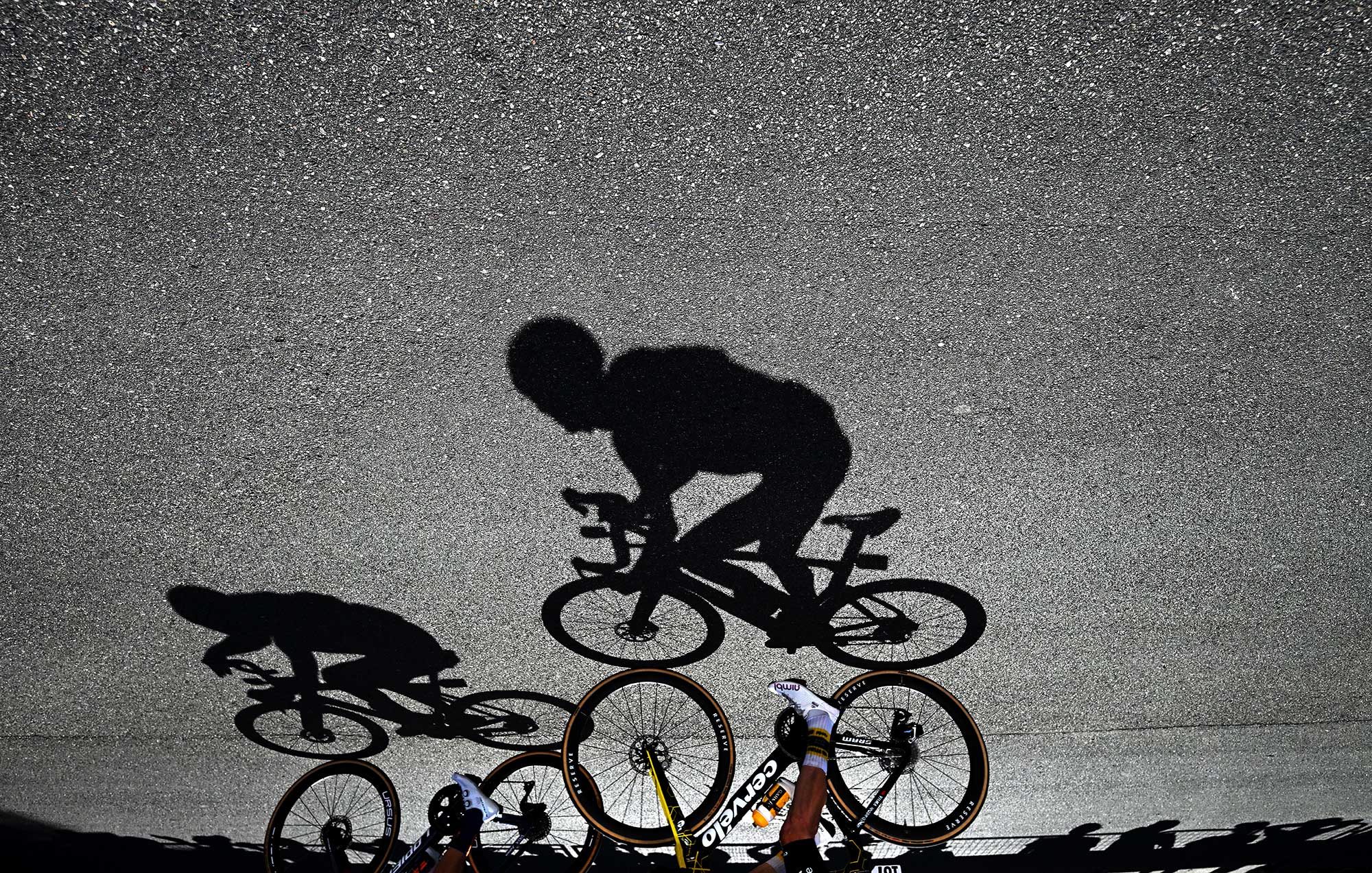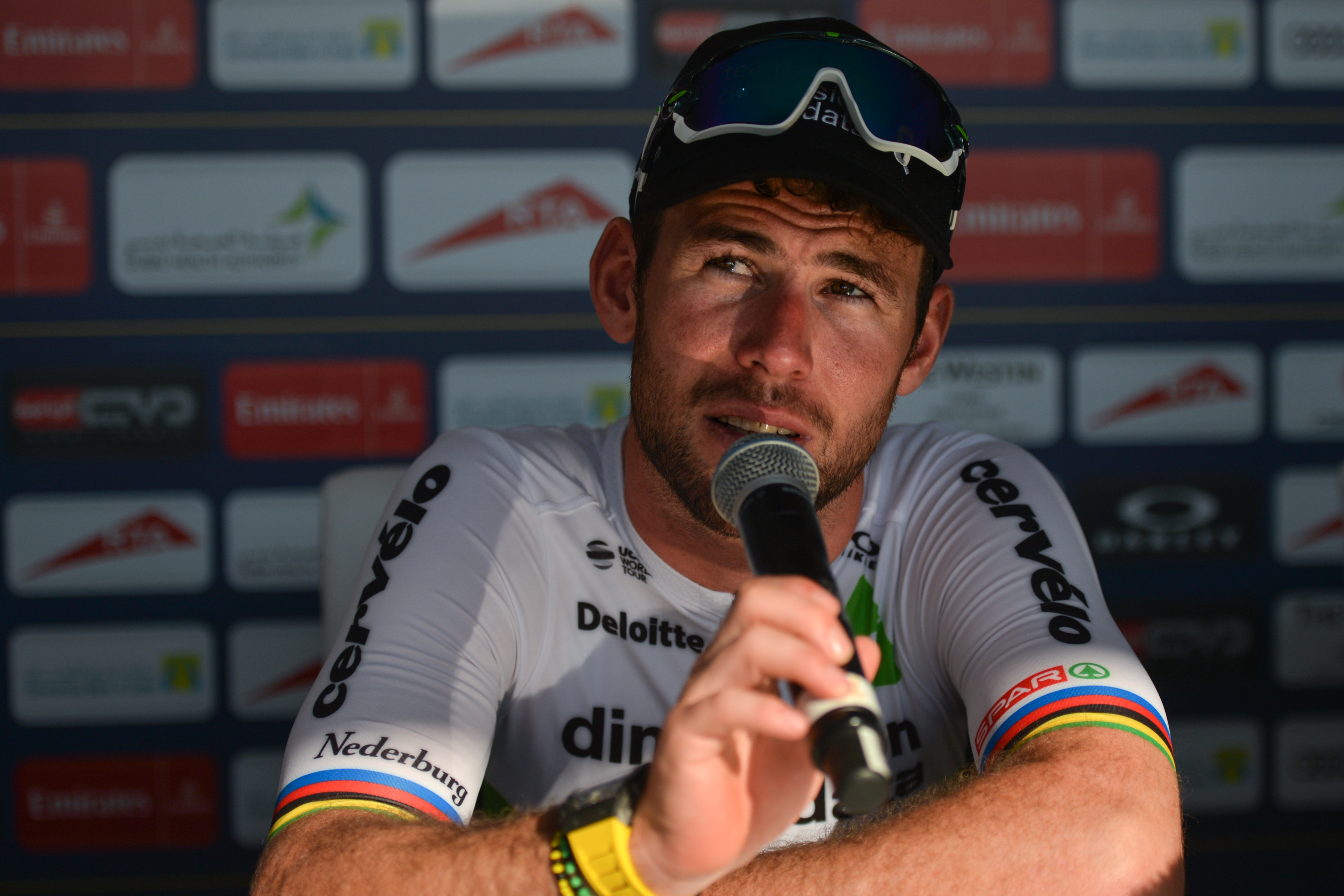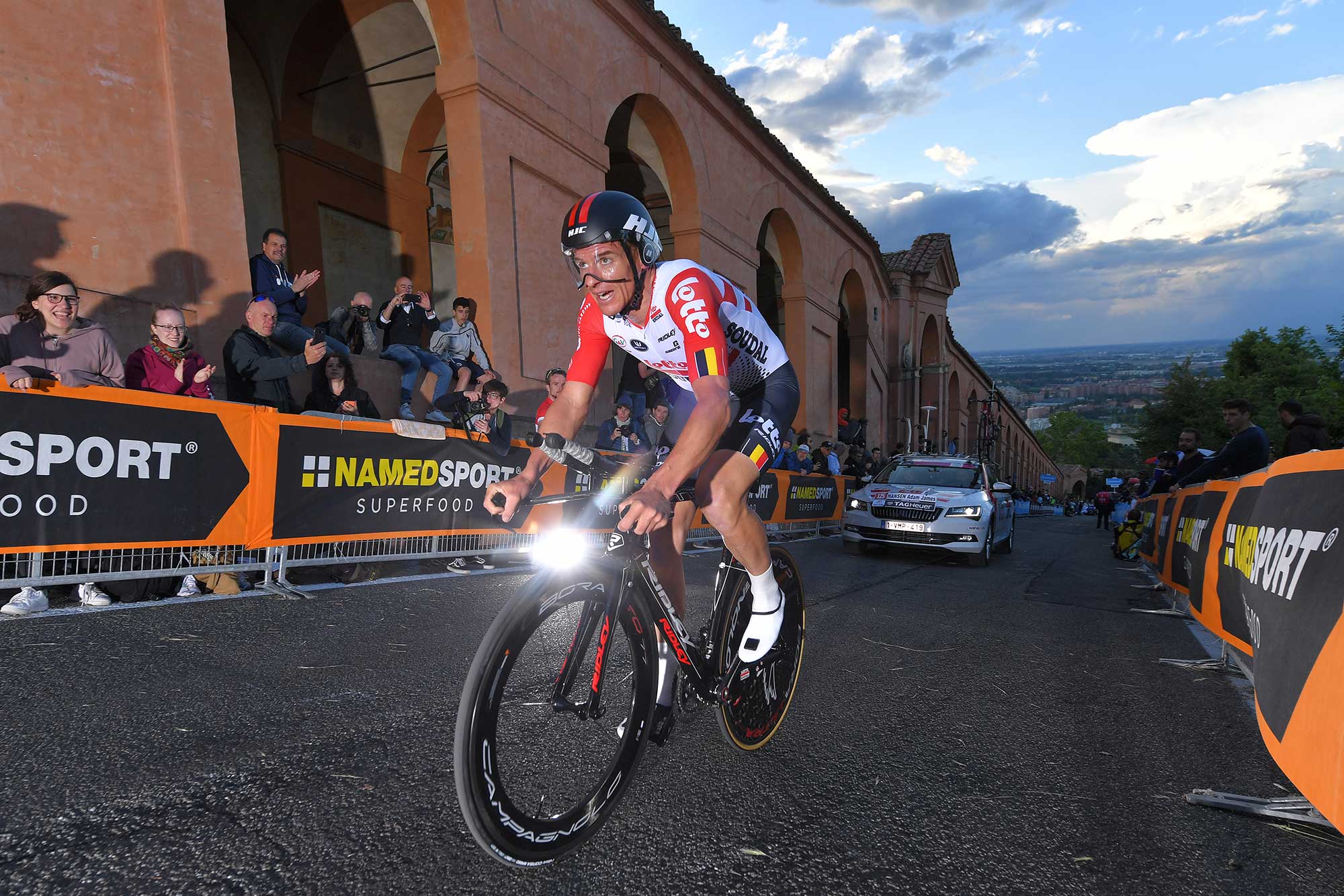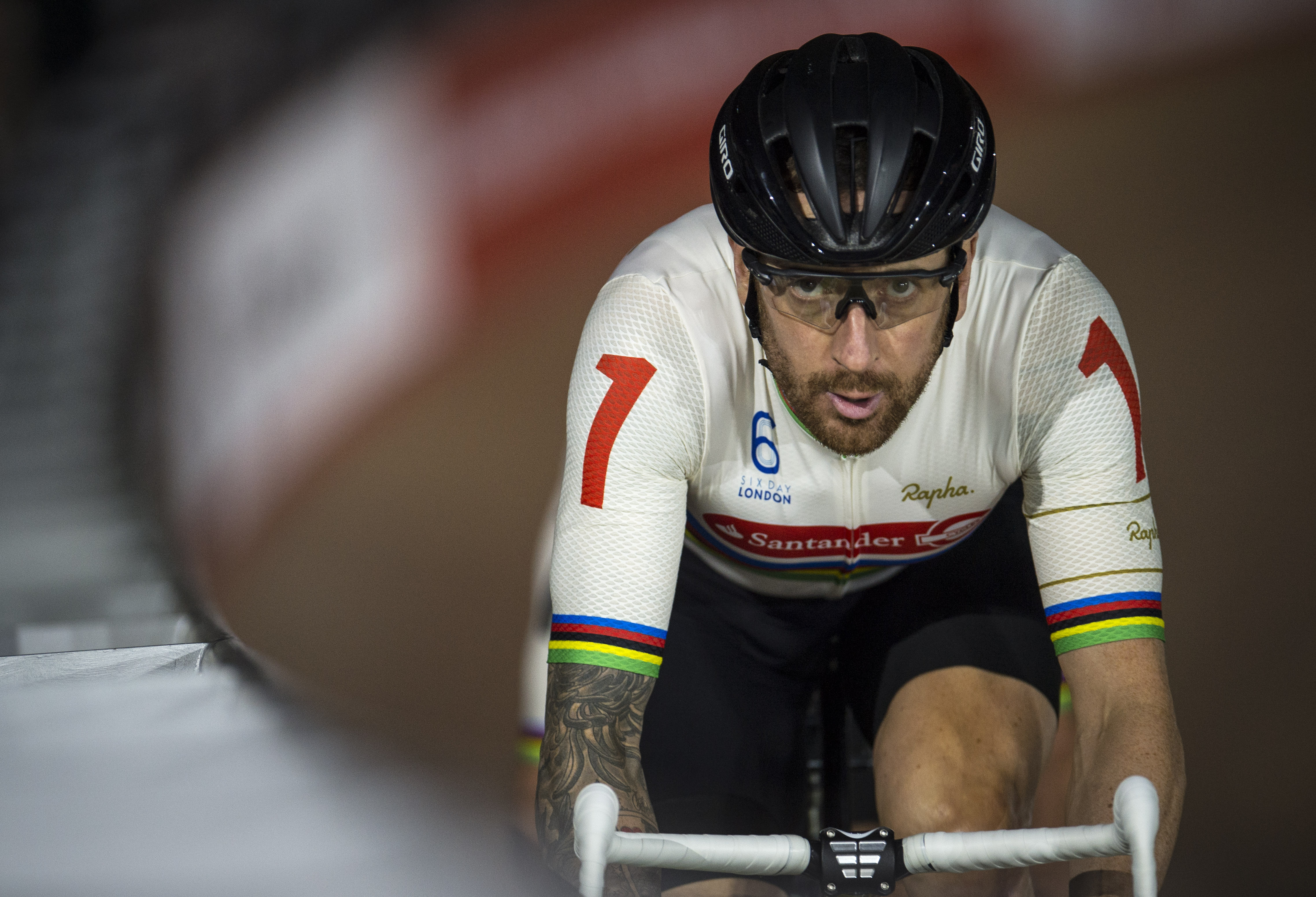Resilience versus risk: Why mental health issues pose pro cycling's biggest problem
Cycling is scarred by riders who have suffered mental health issues, including Mark Cavendish and Tom Dumoulin. There’s evidence that over a quarter of professional riders battle with these issues during their career. Cyclingnews investigates the dark side of a sport that revels in suffering…

The past few seasons have seen several high-profile professional cyclists open up about their struggles with mental health.
Mark Cavendish revealed he battled clinical depression following his struggles to regain form after suffering from the Epstein-Barr virus; Tom Dumoulin retired due to burnout, repeatedly stating that he was "mentally exhausted."
More recently, younger, less experienced riders have struggled earlier in their career too. Prodigious cyclo-cross star Fem van Empel is currently on a hiatus from racing due to mental pressure, whilst Leo Hayter stepped away from the sport and Ineos Grenadiers in August 2024, revealing a five-year battle with depression, anxiety and disordered eating. Positively, he’s now actively seeking a return to professional racing, appealing to teams to let him race the Chrono des Nations this October in search of a permanent place next year.
Given that those are just examples of riders who have spoken out publicly, just how deep are the mental health issues in professional cycling? And, in a sport that prides itself on self-flagellation, what’s being done to address the pain that lives with riders beyond a training session?
More shattered than collarbones
"If you’ve been racing for over 10 years, the chances of breaking your collarbone are around 25%. Is that the worst ‘injury’? Not when you take into account the lifetime risk of a cyclist suffering from depression. That’s around 27.8%." Those are the words of Professor Dr Michael Liebrenz, head of the department of forensic psychiatry at the University of Bern in Switzerland.
Liebrenz has helped to establish the Swiss Mental Health Hub, which offers confidential consultations and educational outreach. It’s targeted at the Swiss national team, but he helps riders all around the world, many of whom share common issues.
"In our systematic review, the rates of self-reported substance use or addiction-related behaviour among cyclists was around 20 to 22%," he adds.
What Liebrenz sees, especially in riders dealing with insomnia, anxiety or depression, is a pattern of reliance on prescription medications like benzodiazepines or Z-substances, particularly around multi-stage races.

"Anecdotally, there seems to be a fairly relaxed prescribing culture during long tours, often with limited explanation or tapering guidance. Riders may sleep better for a week or two, then return home and face abrupt discontinuation, rebound insomnia or even mild withdrawal symptoms," he explains.
"In rare but serious cases, this has evolved into longer-term dependence or combinations with other substances," he adds. "One case we reviewed involved both benzodiazepines and cocaine. But in most instances, it’s not about reckless abuse. It’s about small, cumulative coping strategies in a high-pressure environment where seeking psychological help is still seen as a sign of weakness."
Performance equals pressure
However the mental health disorder manifests itself – eating disorder, overtraining, substance abuse – riders often share an underlying neurobiology, says Liebrenz, especially when performance becomes the athlete's only strategy for emotional regulation. In that kind of setting, the slope is slippery.
"It’s a super performance-oriented environment, which places a lot of pressure on the rider," he says.
This could include earning a new contract, achieving the team’s race goals on any given stage, or sponsor exposure so the team doesn’t fold. Injuries are always a high-risk pressure, as are the extra stresses of a Grand Tour. That’s where Adam Hansen comes in. The Australian holds the record for the most Grand Tours in a row – 20 between 2011 and 2018 – and knows more than most about the oppressive environment it can be.
"Race the Giro d’Italia, Tour de France or Vuelta a España and you’re away from home for around four weeks," Hansen says. "You might arrive on the Tuesday before the race starts. During that time, you’ll have team presentations, media commitments, and time with the sponsors.
"As soon as you wake up, you might have 15 minutes free, and then you have breakfast. You’re then surrounded by people, which isn’t always great for many pro cyclists who are naturally introverts.
"You jump on the bus, again surrounded by people. As you leave the bus, everyone’s screaming at you, wanting attention. The quietest moment is actually when the race starts and is often the most peaceful time for a rider."
It’s a pressure-cooker situation, exacerbated by heat and increasing fatigue. But one of the growing issues is the modern phenomenon of social media.
"It comes with permanent insecurities and must be managed," Liebrenz says.
There’s also the growing understanding of neurodevelopmental disorders like ADHD (attention deficit hyperactivity disorder), which can lead to or exacerbate mental health conditions like anxiety and depression.
Joey Pidcock, brother of Tom, who also races for Q36.5 Pro Cycling, was diagnosed with ADHD in late 2023. He was put on medication and began seeing a psychologist. "It was as if I suddenly stopped walking through three-feet deep water like I had all my life," he wrote on his Instagram feed. "Before, I always felt depressed and unmotivated."
The fast-paced, intense environment of cycling arguably attracts individuals with ADHD-like traits, such as hyperfocus.
"If properly diagnosed, a lot of cyclists would probably be shown to have some form of ADHD," EF Education-EasyPost team boss Jonathan Vaughters has commented in the past, while revealing that he was diagnosed with a form of Autism Spectrum Disorder in 2018.
"I suspect that up to 20% of the peloton could have ADHD," Liebrenz says.

High hours equals higher risk
Concussion could be another cause of mental health disorders, says Liebrenz, as could a rider’s training load. "We’ve recently undertaken research that examined if there is a link between hours trained and mental health," he says. "There is."
Along with a team at Harvard University, Liebrenz looked at 531 endurance athletes, across cycling, triathlon, running and skiing. They were assessed using the Patient Health Questionnaire, which screens for depression, and categorised their weekly workload into one of the following five categories: zero to seven hours; eight to 10 hours; 11 to 13 hours; 14 to 20 hours; and 21-plus hours. The results were stark.
"Under seven hours, around 5% displayed symptoms of a mental health disorder. Between eight and 13 hours, it was around 11%. Between 14 and 20, you’re looking at around 20%, which grew to 26% when training over 21 hours per week," he explained.
This is arguably every professional at the WorldTour level, where the women average around 25,000km and the men 30,000km.
"It’s clear, progressive rise in risk. When physical pain was part of the picture, too, that risk skyrocketed, with nearly one in two athletes above the clinical threshold.
"I don’t want to jump to conclusions about why this happens – there are likely multiple interacting factors, both physiological and psychosocial – but the trend is too strong to ignore," he adds. "My main goal here is to raise awareness: high training volume, especially when combined with pain, should be treated as a potential warning sign, not just a badge of dedication. We need to monitor athletes better, not just for overtraining syndrome or injury, but for the mental health risk that can build quietly under the surface."
Is that 21-plus-hour benchmark the cause or effect of that 26% figure? Are highly driven individuals, who heap huge amounts of pressure on themselves in search of the unreachable – peak performance – attracted by the huge volume of training? Or do the many hours of inflicting pain on oneself, with one’s own thoughts, take a mental toll?
Whatever the reason(s), one thing is clear, says Liebrenz: you can’t out-train a mental health disorder.
"Riders are used to suffering; they accept it’s something they need to do and think the torture is all part of the game. But those hard training sessions, those hard intervals, can delay them from seeking help. They believe that is how they should feel."
Assessing a rider’s mental health
What’s being done to address the issue? Like other sports, historically, there’s been a paucity of mental health initiatives across professional cycling.
"This was compounded by stigma and adverse sociocultural attitudes, often leaving riders exposed to psychiatric vulnerabilities during and following their careers," says Liebrenz. "Thankfully, progress is being made. The UCI now recommends that all teams screen their riders at mandatory medical examinations using the Sport Mental Health Assessment Tool. This directive aims to help facilitate early detection and prevention of mental illness in elite-level cyclists."
The Sport Mental Health Assessment Tool is based on three steps, starting with the Athlete Psychological Strain Questionnaire. This is the triage stage and features 10 statements. For instance, statement 1 is 'It was difficult to be around teammates', while statement 9 is 'I needed alcohol or substances to relax' The rider then responds from 1 to 5 – 1 being 'None of the time' to 5 being 'All of the time'.
The total score is calculated by summing the answers from the 10 statements, ranging from 10 to 50. A score of under 17 requires no further action; a score of 17 or more indicates an elevated risk of psychological distress.
This then leads to the Disorder-Specific Screening Questionnaire that digs deeper into factors like anxiety symptoms, alcohol misuse and disordered eating. If all the answers are negative, the administrator may refer the rider to 'softer' interventions like mindfulness and meditation. If one or more questions are positive, the administrator proceeds to clinical assessment and management, which would be the stage psychiatrists like Liebrenz are brought in, as the psychiatrist highlights with a recent case.

Successful case study
"A 20-year-old female Continental[-level] rider came to us," says Liebrenz. "She’d experienced a performance decline, fatigue, impaired sleep and inconsistent training. She was quite tearful, especially after transferring to a new team."
During the assessment by Liebrenz, she reported suicidal ideation and scored 31 on the Beck Depression Inventory (BDI-II), which translates into severe depression.
"She described how she’d be training, head into the woods, dismount and just cry. She’d be descending and think what would happen if she just rode into oncoming traffic."
The rider was immediately started on antidepressants (fluoxetine), before a period in psychiatric care. Slowly, her symptoms improved. After registering a score of 13 on the BDI-II, she transferred to another team "whose flexible racing contract was based on her mental health status. Today, she is doing well and is a strong advocate for mental health."
Thankfully, many riders don’t reach such dangerous depths, helped by a team’s psychologist, who might be full-time or used on a freelance basis. Liebrenz and his contemporaries fit alongside psychology and medicine, teams and riders tapping into their services if concerns tip beyond common issues like fitting into the team, as he explains.
"After diagnosis, I might see an athlete weekly during a crisis (usually anywhere between 60 and 90 minutes)," he says. "It might be monthly in stable phases or just twice a year for routine screening. During the race season or training camps, that might mean video calls, messages or a good old phone call.
"We often use cognitive behavioural therapy (CBT), so athletes have mental exercises or 'homework', just like they’re used to with training plans. This might include tracking sleep, reframing unhelpful thoughts or stress inoculation strategies. They’re receptive, as structure makes sense to them."
Liebrenz stresses that psychiatric care doesn’t happen in isolation.
"Our role is to guide treatment and shape the environment around the athlete, which means working closely with team doctors, coaches, agents, families and management," he says. "I routinely collaborate with cardiologists, for instance, when a patient might need medication that could influence cardiovascular function or heart rate under load. The goal isn’t just to treat illness. It’s to create conditions where mental health is protected, understood and actively supported. At Swiss Cycling, for example, we’ve created a confidential support hub for national-level riders. It’s open to anyone needing help."
Young and old outliers
That help spans the full spectrum of experience, albeit bookended by unique vulnerabilities. Sir Bradley Wiggins' demons, exacerbated on retirement, saw him "doing shitloads of cocaine", while Marco Pantani and Frank Vandenbroucke died from drug use. A loss of identity and purpose are key dangers facing retired cyclists, which is why Liebrenz suggests that riders need a plan B – another project to focus on that’ll help the transition to civvy street – when they’re still riding. Hansen agrees.
"I was actually okay because my plan B was cycling," says the Australian, who helps riders in his role as president of the CPA (Cyclistes Professionnels Associés), a non-profit association that safeguards the interests of professionals. "Before cycling, I had a job in investment. It’s why, during my career, I invested in property. Many other riders laughed at me, but they spent their money. I’m doing okay, but that took sacrifice.
"I’ve had riders call me up and ask me how I handled retirement. They can’t get their heads around that they were treated like superstars, being transported here and there, cooked for… They don’t realise this is not normal. They don’t really understand what a nine-to-five job is. If they wake up one morning and they planned the night before to go training at 10, and they don’t feel so good, they can leave at 12, no problem, as long as they get their five-hour ride in. You can’t do that in the real world."

At the other end of a rider’s career, there are cases like the 20-year-old Swiss rider Liebrenz worked with. This cohort, he says, is of particular concern, especially with WorldTour teams seemingly seeking ever-younger recruitment in search of the next Pogačar.
"The teenage brain is still developing, particularly in areas related to emotional regulation, impulse control and long-term planning," he says. "Dropping a 16- or 17-year-old into the high-stakes world of professional cycling with contracts, performance tracking, and media exposure leaves little room for error, and essentially asks them to function like fully formed adults in a system that rarely tolerates vulnerability. That’s not just unrealistic; it’s dangerous.
"This isn’t something that a team psychologist or a motivational coach can solve alone. What’s needed is a more clinically grounded and proactive mental health strategy, one that includes professionals with expertise in neurodevelopmental disorders and complex psychiatric conditions. These specialists need to be available not only to riders but to staff as well. Professional cycling is an intense, travelling ecosystem. If no one on the bus knows how ADHD manifests under stress or what early signs of depression look like, those issues will be missed until they’re critical."
REACT professionally
To that end, Liebrenz is an advocate for the REACT framework in professional cycling:
- Routine check-ups. Mental health should be screened regularly, just like physiological parameters. Every six months, not just when there’s a crisis.
- External help. Not every athlete will want to open up inside the team. Make sure confidential, independent options are available outside the structure.
- Assess early, refer early. If there’s even a suspicion of trouble, act. Mental health is like injury management – earlier is always better.
- Collaborate with specialists. Especially for complex cases like ADHD or comorbid conditions, teams need sports psychiatrists involved, not just general mental coaches.
- Treat early, manage long-term. Mental health doesn’t end when a rider stabilises. It requires ongoing care, monitoring and support across seasons.
"The goal shouldn’t be to slow down talent development, but to balance it with appropriate psychological scaffolding," he says. "Young riders need space to be human, not just high-performance machines. Teams that recognise this, and act on it, will not only protect their athletes but also improve longevity and performance outcomes."
Despite their superlative levels of physical fitness and incredible focus, professional cycling is fraught with complex psychosocial challenges, be it competitive demands, weight-related concerns or injury fears. It’s a sport that lionises suffering and rewards pain tolerance. But at what cost to the rider’s mental health? On winning his fourth Tour de France title, Tadej Pogacar commented that he’s "already counting down to retirement".
It not only highlighted the Slovenian’s pragmatism but his acknowledgement that this sport chips away at you, even when you’re one of the greatest cyclists to have lived. As Liebrenz said, no matter how high your VO2max or peak power output, you can’t out-train a mental health disorder. But with the right support from youth to retirement, hopefully they won’t need to.
You must confirm your public display name before commenting
Please logout and then login again, you will then be prompted to enter your display name.
